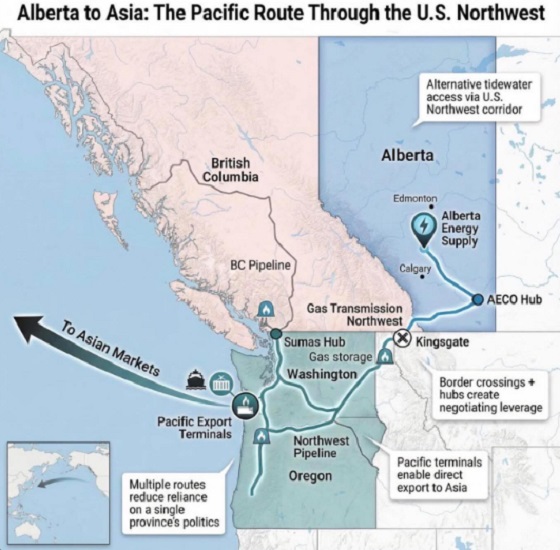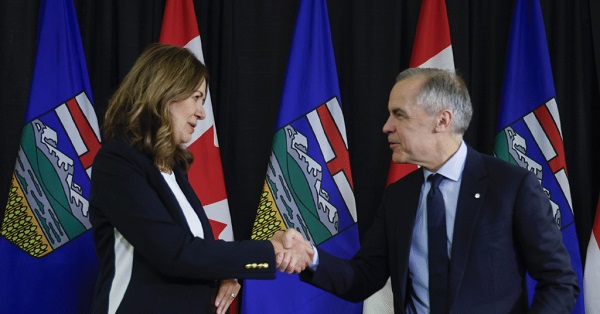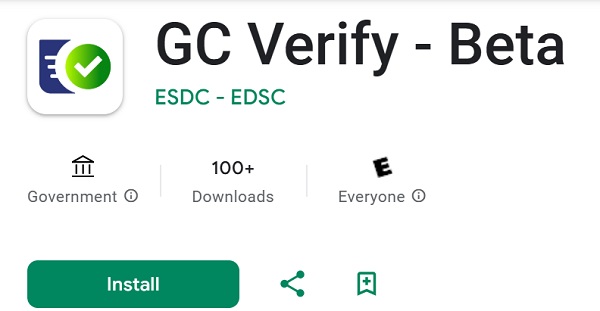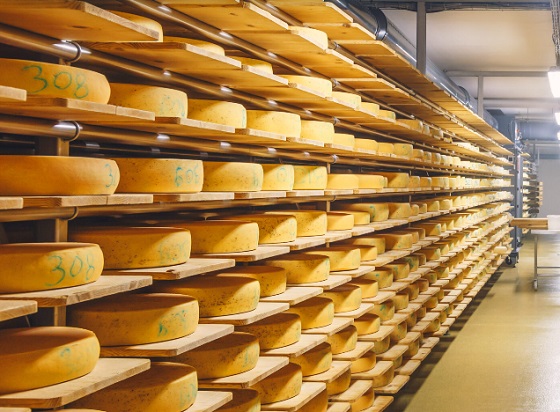Alberta
Covid no longer means special measures. Province brings treatment in line with flu and other viruses

Adapting COVID-19 measures to support Albertans
With strong vaccine uptake, Alberta will gradually bring COVID-19 measures in line with other respiratory viruses to ensure health system capacity for the fall.
Nearly 75.6 per cent of eligible Albertans have now received at least one dose of COVID-19 vaccine, and 64.3 per cent are fully immunized. Vaccines dramatically reduce the risk of severe outcomes and the risk of infection. While COVID-19 cases may rise in the coming months, a surge of hospitalizations and other severe outcomes is much less likely thanks to vaccines.
In the coming weeks, Alberta’s health system will take steps to make sure that it is ready to support all patients, including those with COVID-19 and other respiratory viruses, like influenza, which health officials expect to increase this year.
As a part of this, Alberta will bring COVID-19 quarantine, isolation, and other measures in line with those used for influenza and other viruses.
Testing for severe cases, provincial monitoring, outbreak management in high-risk settings, and other key measures will remain in place. Health officials will be able to adapt as needed if hospitalizations due to COVID-19 spike in the future.
“Our health system will keep protecting Albertans who are exposed to COVID-19 while also ensuring that we are able to handle all other viruses and illnesses. As the majority of us are vaccinated against COVID-19, we are adapting to make sure that the health system is ready to care for all Albertans, whatever their illness. Please get vaccinated to help protect your health and the health of those around you.”
“Our top priority is supporting the health of Albertans. COVID-19 is still with us but we are now in a place where we need to manage it through vaccinations and the proven public health measures used for other communicable viruses. We expect to see increased influenza and other viruses this year, and these changes will make sure the health system is ready and able to support all Albertans in the months ahead.”
A two-phase transition will be used to safely monitor the impact of the initial changes, adapt as needed over the next few weeks, and give more time to vaccinate Albertans.
The following changes will be effective July 29:
- Quarantine for close contacts will shift from mandatory to recommended. Isolation for anyone with COVID-19 symptoms and for confirmed positive cases is still required.
- Unimmunized individuals who know they have been exposed to COVID-19 should monitor for symptoms and seek testing if they become symptomatic.
- Anyone who is not fully immunized should avoid high-risk locations such as continuing care facilities and crowded indoor spaces if they have been in contact with a case in the past 14 days.
- All positive cases will continue to be notified. Contact tracers will no longer notify close contacts of exposure. Individuals are asked to inform their close contacts when informed of their positive result.
- Contact tracers will continue to investigate cases that are in high-risk settings such as acute and continuing care facilities.
- Outbreak management and identification will focus on high-risk locations, including continuing and acute care facilities and high-risk workplaces. Community outbreaks with a surge in cases leading to severe outcomes will also be addressed as needed.
- Asymptomatic testing is no longer recommended. Testing will continue to be available for individuals who are symptomatic.
- Mandatory masking remains in acute and continuing care facilities, publicly accessible transit, taxis and ride-share.
The following changes will take effect on Aug. 16:
- Provincial mandatory masking orders will be lifted. Some masking in acute care or continuing care facilities may still be required.
- Isolation following a positive COVID-19 test result will no longer be required, but strongly recommended.
- Individuals with symptoms of any respiratory infection should still remain at home until symptoms have resolved.
- Staying home when sick remains an important way to care for those around us by not passing on any infection.
- Isolation hotels and quarantine support will no longer be available.
- Testing will be available for Albertans with symptoms when it is needed to help direct patient care decisions.
- This testing will be available through assessment centres until Aug. 31 and, after that, will be in primary care settings including physicians’ offices. For those with severe illness requiring urgent or emergency care, testing will be available in acute care and hospital settings.
- COVID-19 testing will also be offered as needed in high-risk outbreaks such as in continuing care facilities.
- Public health will focus on investigating severe cases that require hospitalization and any deaths due to COVID-19.
- Outbreak management and preventative measures will continue focusing on outbreaks in high-risk settings, such as continuing and acute care facilities.
- Community outbreaks will continue to be addressed as needed.
- Daycares and schools will be supported with measures that would be effective for any respiratory virus if outbreaks are identified.
Health officials will continue to closely monitor hospitalizations and other severe outcomes due to COVID-19 in the province. Additional measures will be taken, as needed, in specific facilities or areas where an outbreak is occurring leading to severe outcomes.
Universal masking will not be required in schools once students return. However, it is recommended as a temporary outbreak intervention in response to respiratory outbreaks. A guidance document to support return to schools is being finalized and will be released in mid-August.
A wastewater baseline testing program will also be launched to provide area trend information and monitor variants of concern. More details will be released in the coming weeks.
Alberta
What are the odds of a pipeline through the American Pacific Northwest

From Resource Works
Can we please just get on with building one through British Columbia instead?
Alberta Premier Danielle Smith is signalling she will look south if Canada cannot move quickly on a new pipeline, saying she is open to shipping oil to the Pacific via the U.S. Pacific Northwest. In a year-end interview, Smith said her “first preference” is still a new West Coast pipeline through northern British Columbia, but she is willing to look across the border if progress stalls.
“Anytime you can get to the West Coast it opens up markets to get to Asia,” she said. Smith also said her focus is building along “existing rights of way,” pointing to the shelved Northern Gateway corridor, and she said she would like a proposal submitted by May 2026.
Deadlines and strings attached
The timing matters because Ottawa and Edmonton have already signed a memorandum of understanding that backs a privately financed bitumen pipeline to a British Columbia port and sends it to the new Major Projects Office. The agreement envisages at least one million barrels a day and sets out a plan for Alberta to file an application by July 1, 2026, while governments aim to finish approvals within two years.
The bargain comes with strings. The MOU links the pipeline to the Pathways carbon capture network, and commits Alberta to strengthen its TIER system so the effective carbon credit price rises to at least 130 dollars a tonne, with details to be settled by April 1, 2026.
Shifting logistics
If Smith is floating an American outlet, it is partly because Pacific Northwest ports are already drawing Canadian exporters. Nutrien’s plan for a $1-billion terminal at Washington State’s Port of Longview highlighted how trade logistics can shift when proponents find receptive permitting lanes.
But the political terrain in Washington and Oregon is unforgiving for fossil fuel projects, even for natural gas. In 2023, federal regulators approved TC Energy’s GTN Xpress expansion over protests from environmental groups and senior officials in West Coast states, with opponents warning about safety and wildfire risk. The project would add about 150 million cubic feet per day of capacity.
A record of resistance
That decision sits inside a longer record of resistance. The anti-development activist website “DeSmog” eagerly estimated that more than 70 percent of proposed coal, oil, and gas projects in the Pacific Northwest since 2012 were defeated, often after sustained local organizing and legal challenges.
Even when a project clears regulators, economics can still kill it. Gas Outlook reported that GTN later said the expansion was “financially not viable” unless it could obtain rolled-in rates to spread costs onto other utilities, a request regulators rejected when they approved construction.
Policy direction is tightening too. Washington’s climate framework targets cutting climate pollution 95 percent by 2050, alongside “clean” transport, buildings, and power measures that push electrification. Recent state actions described by MRSC summaries and NRDC notes reinforce that direction, including moves to help utilities plan a transition away from gas.
Oregon is moving in the same direction. Gov. Tina Kotek issued an executive order directing agencies to move faster on clean energy permitting and grid connections, tied to targets of cutting emissions 50 percent by 2035 and 90 percent by 2050, the Capital Chronicle reported.
For Smith, the U.S. corridor talk may be leverage, but it also underscores a risk, the alternative could be tougher than the Canadian fight she is already waging. The surest way to snuff out speculation is to make it unnecessary by advancing a Canadian project now that the political deal is signed. As Resource Works argued after the MOU, the remaining uncertainty sits with private industry and whether it will finally build, rather than keep testing hypothetical routes.
Resource Works News
Alberta
Alberta Next Panel calls to reform how Canada works

From the Fraser Institute
By Tegan Hill
The Alberta Next Panel, tasked with advising the Smith government on how the province can better protect its interests and defend its economy, has officially released its report. Two of its key recommendations—to hold a referendum on Alberta leaving the Canada Pension Plan, and to create a commission to review programs like equalization—could lead to meaningful changes to Canada’s system of fiscal federalism (i.e. the financial relationship between Ottawa and the provinces).
The panel stemmed from a growing sense of unfairness in Alberta. From 2007 to 2022, Albertans’ net contribution to federal finances (total federal taxes paid by Albertans minus federal money spent or transferred to Albertans) was $244.6 billion—more than five times the net contribution from British Columbians or Ontarians (the only other two net contributors). This money from Albertans helps keep taxes lower and fund government services in other provinces. Yet Ottawa continues to impose federal regulations, which disproportionately and negatively impact Alberta’s energy industry.
Albertans were growing tired of this unbalanced relationship. According to a poll by the Angus Reid Institute, nearly half of Albertans believe they get a “raw deal”—that is, they give more than they get—being part of Canada. The Alberta Next Panel survey found that 59 per cent of Albertans believe the federal transfer and equalization system is unfair to Alberta. And a ThinkHQ survey found that more than seven in 10 Albertans feel that federal policies over the past several years hurt their quality of life.
As part of an effort to increase provincial autonomy, amid these frustrations, the panel recommends the Alberta government hold a referendum on leaving the Canada Pension Plan (CPP) and establishing its own provincial pension plan.
Albertans typically have higher average incomes and a younger population than the rest of the country, which means they could pay a lower contribution rate under a provincial pension plan while receiving the same level of benefits as the CPP. (These demographic and economic factors are also why Albertans currently make such a large net contribution to the CPP).
The savings from paying a lower contribution rate could result in materially higher income during retirement for Albertans if they’re invested in a private account. One report found that if a typical Albertan invested the savings from paying a lower contribution rate to a provincial pension plan, they could benefit from $189,773 (pre-tax) in additional retirement income.
Clearly, Albertans could see a financial benefit from leaving the CPP, but there are many factors to consider. The government plans to present a detailed report including how the funds would be managed, contribution rates, and implementation plan prior to a referendum.
Then there’s equalization—a program fraught with flaws. The goal of equalization is to ensure provinces can provide reasonably comparable public services at reasonably comparable tax rates. Ottawa collects taxes from Canadians across the country and then redistributes that money to “have not” provinces. In 2026/27, equalization payments is expected to total $27.2 billion with all provinces except Alberta, British Columbia and Saskatchewan receiving payments.
Reasonable people can disagree on whether or not they support the principle of the program, but again, it has major flaws that just don’t make sense. Consider the fixed growth rate rule, which mandates that total equalization payments grow each year even when the income differences between recipient and non-recipient provinces narrows. That means Albertans continue paying for a growing program, even when such growth isn’t required to meet the program’s stated objective. The panel recommends that Alberta take a leading role in working with other provinces and the federal government to reform equalization and set up a new Canada Fiscal Commission to review fiscal federalism more broadly.
The Alberta Next Panel is calling for changes to fiscal federalism. Reforms to equalization are clearly needed—and it’s worth exploring the potential of an Alberta pension plan. Indeed, both of these changes could deliver benefits.
-

 International2 days ago
International2 days agoAustralian PM booed at Bondi vigil as crowd screams “shame!”
-

 Uncategorized2 days ago
Uncategorized2 days agoMortgaging Canada’s energy future — the hidden costs of the Carney-Smith pipeline deal
-

 Alberta1 day ago
Alberta1 day agoAlberta Next Panel calls to reform how Canada works
-

 Automotive1 day ago
Automotive1 day agoCanada’s EV gamble is starting to backfire
-

 Digital ID17 hours ago
Digital ID17 hours agoCanadian government launches trial version of digital ID for certain licenses, permits
-

 Agriculture1 day ago
Agriculture1 day agoEnd Supply Management—For the Sake of Canadian Consumers
-

 Business16 hours ago
Business16 hours agoThe “Disruptor-in-Chief” places Canada in the crosshairs
-

 International17 hours ago
International17 hours agoWorld-leading biochemist debunks evolutionary theory




